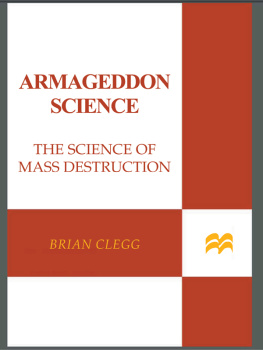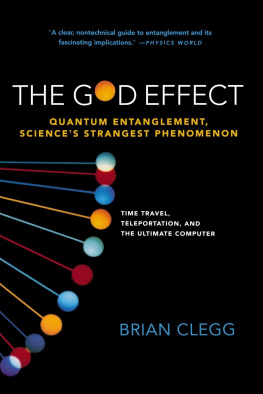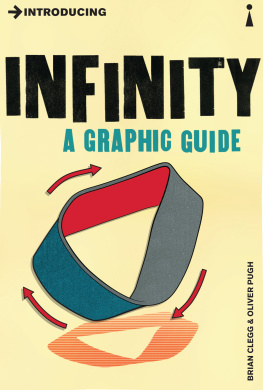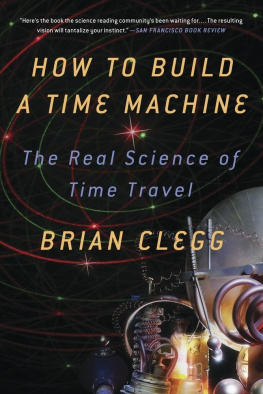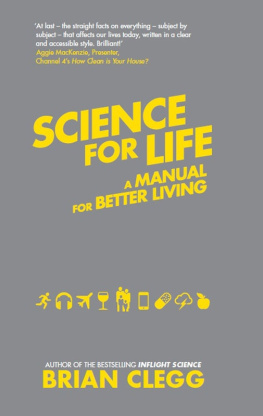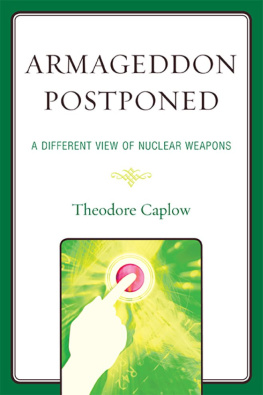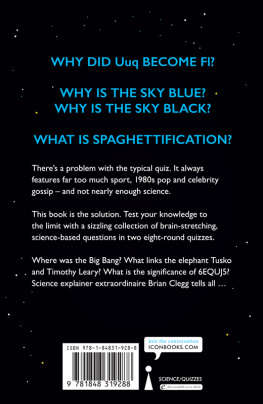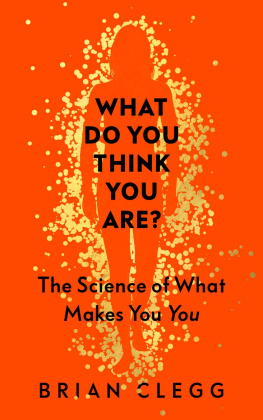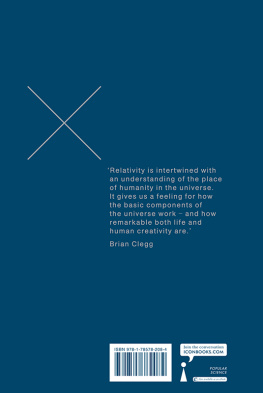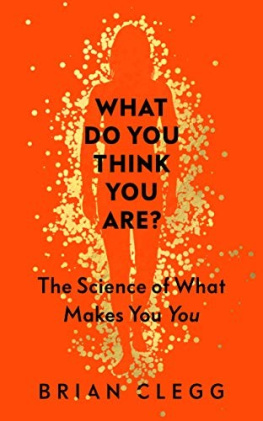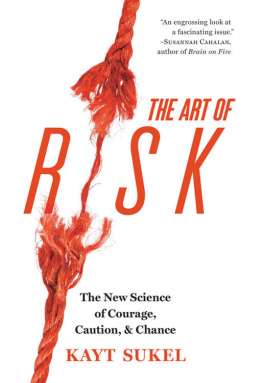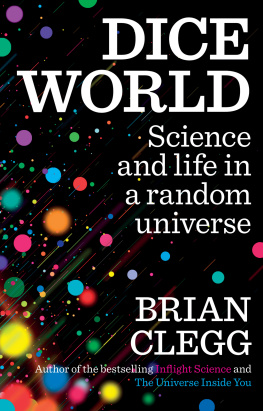Chapter One
Mad Scientists
It was the secrets of heaven and earth that I desired to learn.
Mary Shelley (17971851), Frankenstein (1818)
Mass destructionkilling on a vast scaleis a uniquely human concern. Its not that other animal species arent threatened by it. Many have been driven to extinction, and many more now teeter on the brink. But unlike human beings, even the most intelligent animals dont worry about the possibility of being wiped out in a terrible catastrophe. It is only thanks to the human ability to contemplate the future that fears of mass destruction have arisen. As the continued popularity of disaster movies at the box office demonstrates, we are all too aware how, as a race, we might be wiped out.
Mass destruction has, historically, been a natural phenomenon. The Earth has witnessed widespread devastation numerous times, most famously in the destruction of the dinosaurs 65 million years ago. We could still see a similar act of mass destruction in the future that does not require a human hand behind it. But with the introduction of the weapon of mass destruction, the notion is most commonly associated with the work of the mador at best, amoralscientist.
The term weapons of mass destruction first appeared in a Christmas sermon by the archbishop of Canterbury in 1937. He encouraged his audience to promote peace. Who can think without dismay of the fears, jealousies and suspicions which have compelled nations, our own among them, to pile up their armaments, he said. Who can think without horror of what another widespread war would mean, waged as it would be with all the new weapons of mass destruction.
The archbishop was concentrating on the political will to use such weapons. His was a generation that had lived through the First World War, expecting it to be the war to end all wars, yet was seeing the rapid buildup of military might in Europe as the Second World War loomed. However responsible politics was for the warfare, though, it goes without saying that scientists would be the ones who made such weapons exist.
Its a truth that cant be avoided. Science itselfor at least, the application of sciencehas a dark side. Scientists present us with dangerous gifts.
This isnt a new idea, though for a brief periodfrom Victorian times through to the mid-twentieth centuryscientists were seen in quite a different light. New technologies and scientific developments transformed the unpleasant life suffered by the vast majority of the population into a new kind of existence. It was no longer necessary to spend every moment scratching out a living. For the first time, it wasnt just the rich and powerful who had time for leisure and enjoyment of life. Scientists were briefly considered saviors of our race.
These men (and back then they almost all were men) were bold bringers of wonderful new things, Santa Claus and the Easter Bunny rolled into one real package that delivered all year round. All the marvels of electricity, of modern medicine, of new modes of transport and labor-saving devices, were their gift. And we still see echoes of this in TV ads for beauty products, where the person in the white coat is the bringer of magic ingredients that are guaranteed to make you look better and younger.
But the warning of Pandoras box, the dangers inherent in bringing knowledge into the world, could not be held off for long. If you live in a physically dangerous environment, trying new things, finding things out, is a high-risk strategy. If a cave person decided to experiment with a new approach to saber-toothed tigers, patting them on the head instead of sticking them with a spear, she would soon be a one-armed cave person. For most of history, the scientist and his predecessor, the natural philosopher, have been characters of suspicion, closely allied with magicians, sorcerers, and other dabblers in arcane arts. This was not a stereotype that even the wonders of nineteenth- and twentieth-century technology could hold off for long.
Scientists as dangers to the world would return in pulp fiction and cheap movies, where they are often portrayed as barely human. At best, these driven souls are over-idealistic and unworldly. They are what my grandmother would have called all cleverness and no common sense. They are innocents who dont knowor dont carewhat the outcomes of their acts will be. At the nasty end of the spectrum, they are even worse, evil beings filled with a frenzied determination to achieve world domination or to pursue what they see as scientific truth at any cost.
Such two-dimensional, caricature scientists dont care whom they trample to reach their goal. They have a casual disregard for the impact of what they do on human lifeor even on the planet as a whole. They are scientific Nazis for whom the end always justifies the means. They are nothing short of monsters in human form.
Practically all the scientists I have ever met are not like this. They are warm, normal people. They have the same concerns as everyone else about the world their children will inhabit, the same worries that preoccupy us all. Admittedly some are unashamed geeksand if you consider a geek anyone who has a sense of wonder about the universe he lives in, its a group in which I happily proclaim my membershipbut they arent inhuman thinking machines. So where did this idea come from?
Inevitably science fiction has to bear a fair amount of the blame for this portrayal. When the teenage Mary Godwin (soon to become Mary Shelley) first penned Frankenstein on a traumatic vacation in an Italian villa, she certainly had in mind that her character was playing God. He admits as much in his confession that opens this chapter, It was the secrets of heaven and earth that I desired to learn. There is no modesty hereVictor Frankenstein wants to be a master of the universe, and his talkative creation, very different from the shambling, incoherent creature of the movies, spends great swaths of text agonizing over the dangers of this philosophy.
Yet Mary Shelleys Baron Frankenstein is not quite yet the archetypal mad scientistan expression that would become so common as to be a clich. It first took those doyens of nineteenth- and twentieth-century science fiction, Jules Verne and H. G. Wells, to show us just how driven their imagined scientists could be. So Vernes Captain Nemo could be a merciless killer, and Wells would give us characters like the Invisible Man, driven insane by his search for knowledge, and Dr. Moreau, who despoiled animal and human alike with his merciless vivisection.
The final nail in the coffin would come with the contribution of Hollywood. Here Victor Frankenstein would be transformed from a thoughtful (if megalomaniac) philosopher to a crazed, wide-eyed freak. On celluloid would be born the evil genius Rotwang in Fritz Langs stunning silent movie Metropolis, and Peter Sellerss darkly humorous portrayal of the appalling Dr. Strangelove. These movie madmen would be joined by the living incarnations of evil comic-book scientific geniuses, from Lex Luthor to the Green Goblin.
Even when a scientist managed to be one of the good guys, such as Doc Brown in the Back to the Future series of movies, he still sported the wild hair (Einstein can probably be blamed for this) and semi-irrational behavior of his more dangerous equivalents. Perhaps most telling of all, Hollywood would give us Forbidden Planet, with Doctor Morbius and his monsters from the iddestructive forces released by expanding the capacity of the human mind.

